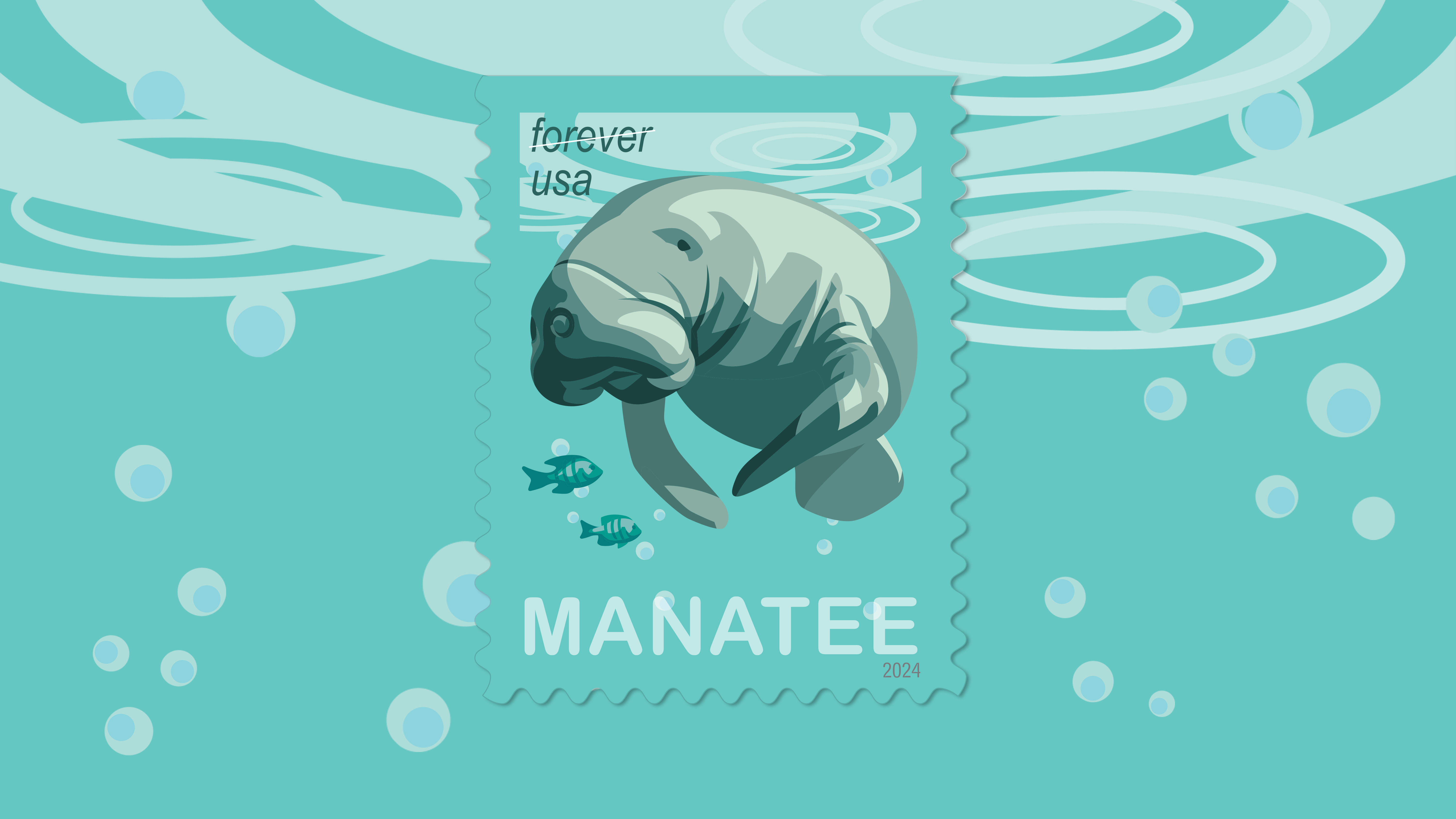
From Mailboxes to Mangroves
Slow-swimming manatees leave flat, round ripples on the surface of their shallow home waters in and around Florida. These watery traces — called footprints but caused by propulsive up-down tail motion — can clue attentive humans into recognizing the company of manatees, and to the need to proceed with caution.
But the gentle creatures need more publicity than those fleeting ripples if they are to survive and thrive.
The Save Manatees stamp has been issued to raise awareness of the threats posed to the West Indian manatee (Trichechus manatus). Human vigilance is crucial — to minimize watercraft collisions and to maintain the aquatic plants on which manatees feed. Toxic algae blooms, intensified by excess nutrient runoff from fertilizer and from septic tanks, kill the manatee’s key food source, causing starvation spikes in recent years.
Drawing attention, raising awareness
When the U.S. Postal Service resolved to bring attention to the manatee’s plight, it contacted Nancy Stahl, whose illustrations have appeared on dozens of popular postage stamps, many featuring her engaging animal artwork. “I love drawing animals almost as much as I do people,” she says.

The Save Vanishing Species semipostal fundraising stamp, issued in 2011 and still available, is one that Stahl calls out as a personal favorite, “because it has raised more than $8 million to protect wildlife,” she says. Since the release of that stamp, featuring Stahl’s memorably adorable depiction of an Amur tiger cub, those millions of dollars have supported various multinational species-conservation funds.
“That's probably the most good I’ve ever done with a drawing,” Stahl says. “It really makes me happy.”
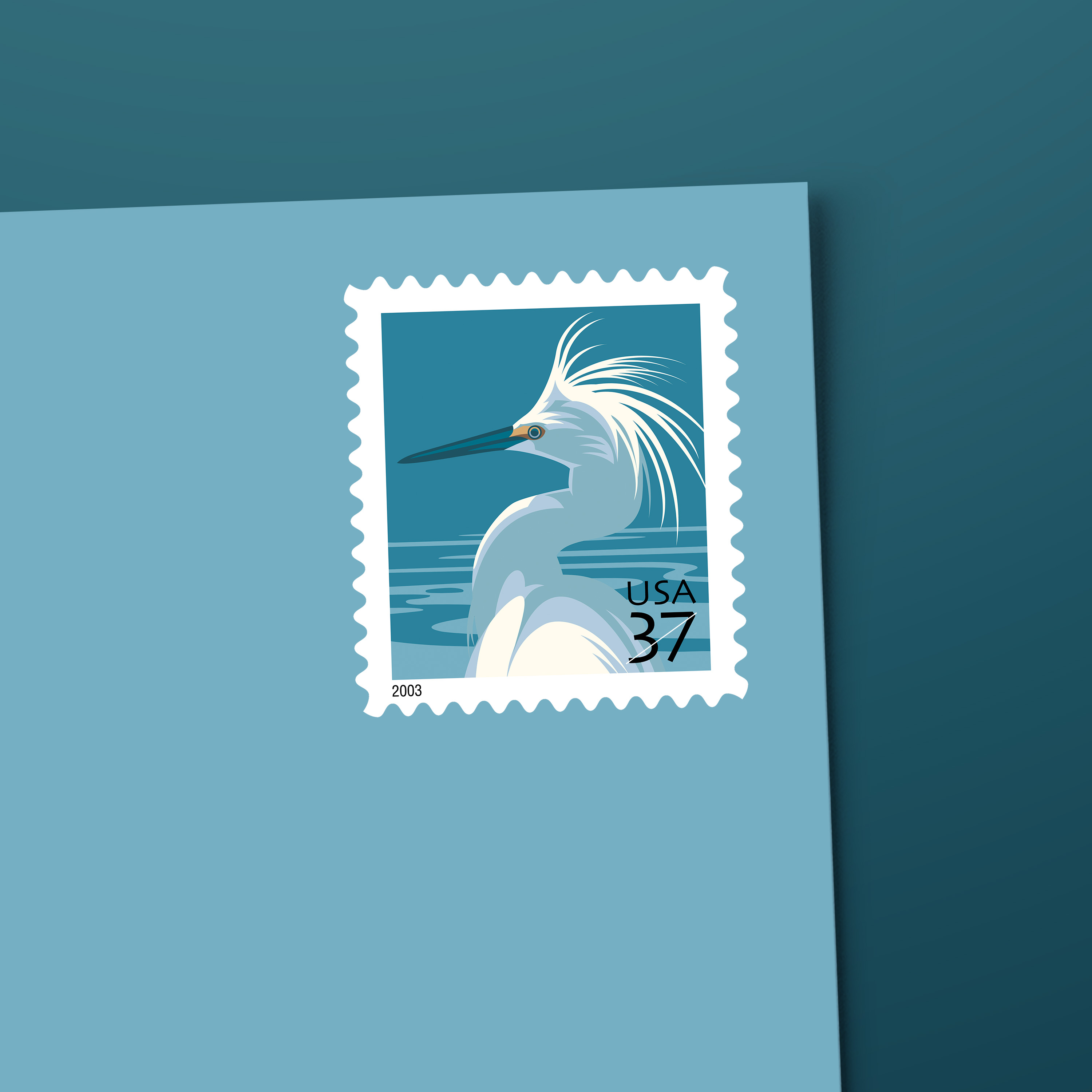
Another beautiful stamp by Stahl is Snowy Egret, issued in 2003. The striking and immensely popular 37-cent stamp reached many billions in circulation before the conclusion of the original print run and several subsequent reissues. The white-on-blue stamp also inaugurated an unofficial series of Stahl-illustrated wildlife stamps, all of which she rendered in shades of blue to give cohesion to the group.
“I love drawing animals almost as much as I do people.”
Of those stamps, she remains particularly pleased with the Florida Panther illustration, pointing out that “the sultry look in his eyes is pretty provocative for a postage stamp.” Like the West Indian manatee, the Florida panther is also protected by the Endangered Species Act.
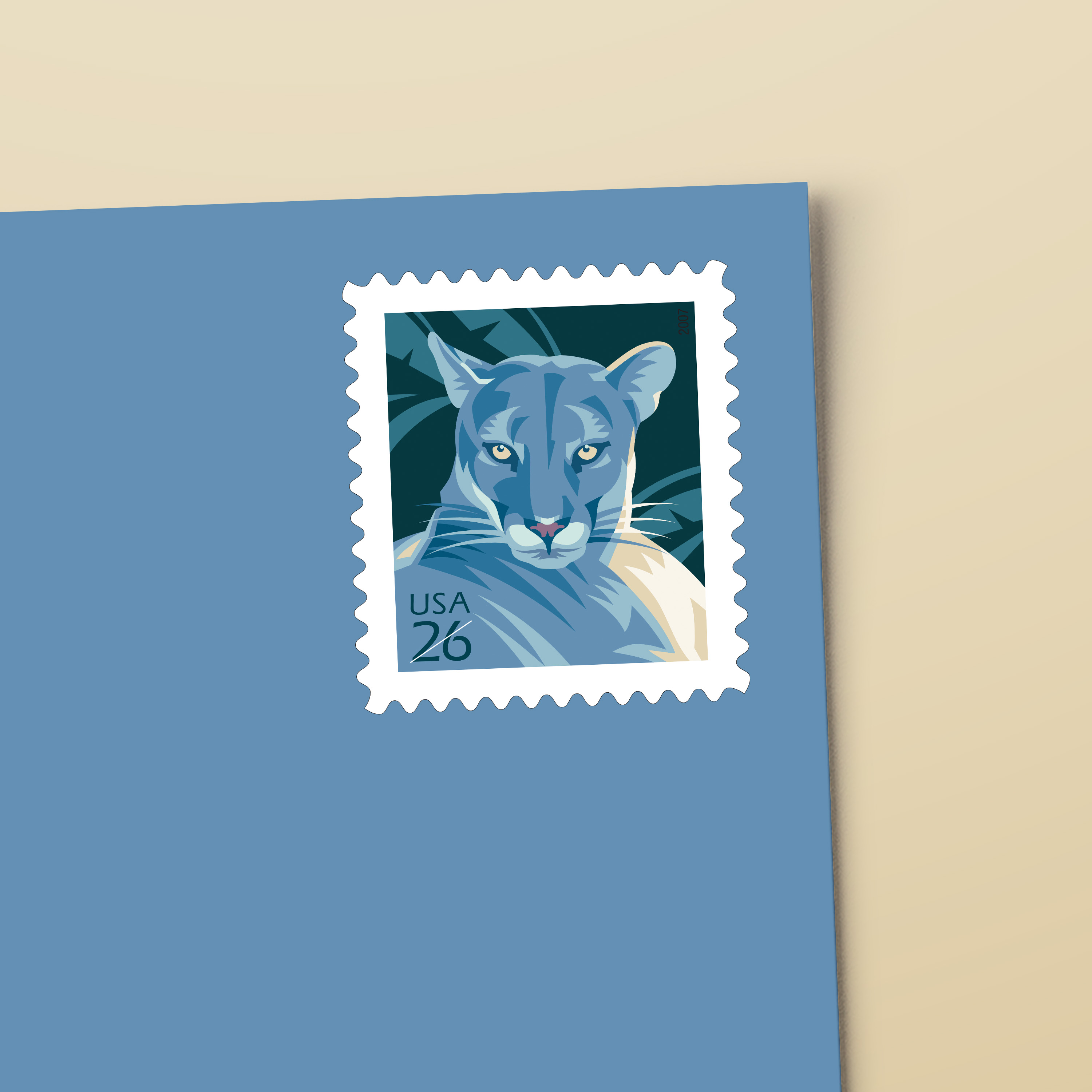
The manatee in perspective
Stahl’s aqua-colored illustration for the Save Manatees stamp, rendered in her distinctive, boldly graphic “poster” style, shows a manatee head-on, viewed from underwater. The slightly leftward face-to-face orientation of the manatee came after some experimentation.
“Not having my own personal manatee to model for me,” Stahl explains, “I relied on photographic reference in order to create the drawing. From hundreds of pictures, I found a dozen or so that held any interest, ranging from a full-body profile to another, completely straight-on, which wouldn’t have reduced well. I roughed out how they might be framed by the stamp dimensions, then culled them further to arrive at seven positions that I felt might work.”
Teamed with art director Derry Noyes, the two arrived at a point of view that would best express the large animal — typically about eight to 11 feet long — and that would do the manatee as much justice as possible within the stamp’s constraints of about a single square inch.
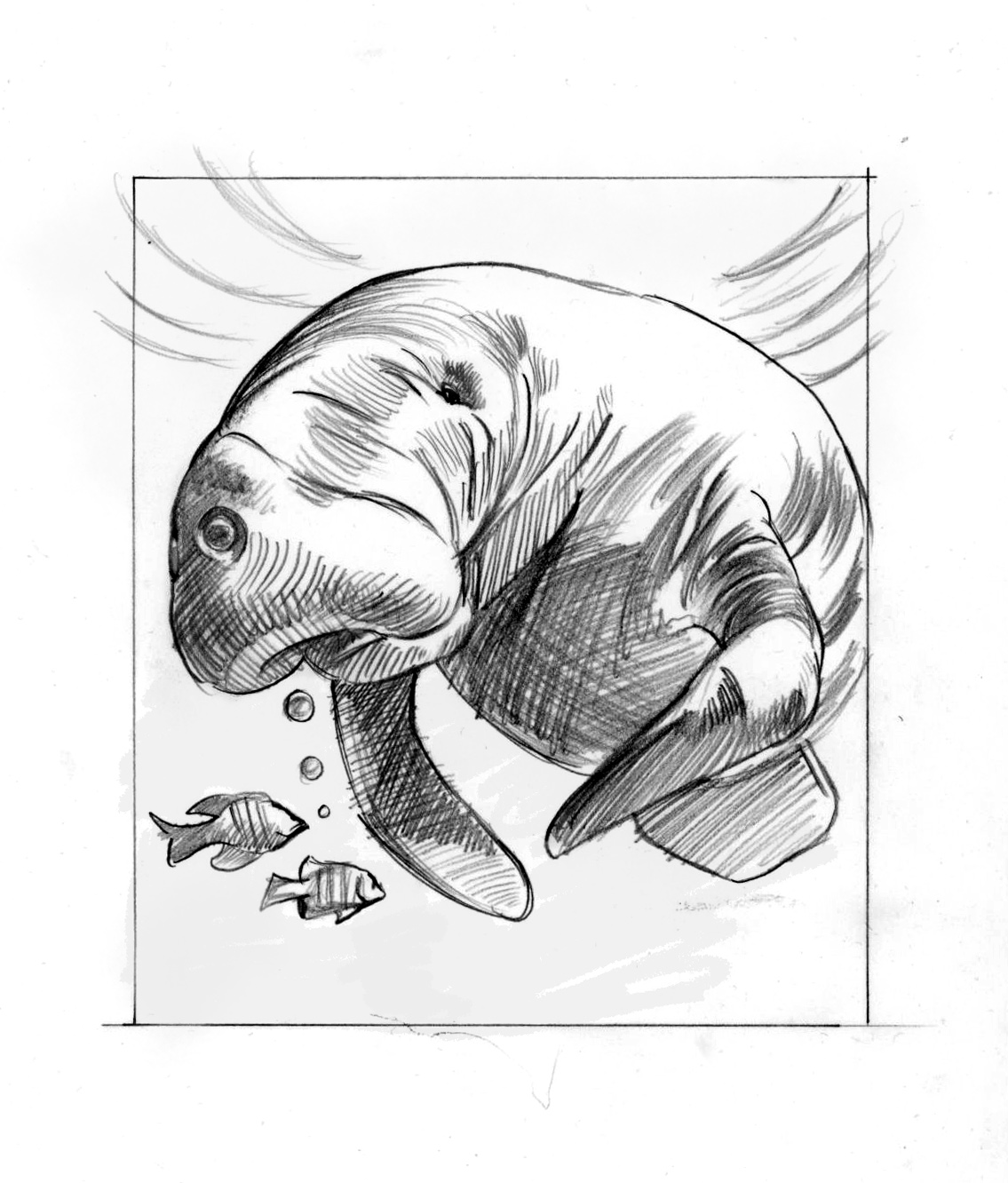
Further conveying the manatee’s habitat in Stahl’s illustration are two fish lingering at lower left. “There are many fish species that hang around manatees,” says Roger Reep, a biologist who has spent much of his career at the forefront of manatee research. “They clean them by eating algae off their bodies.” The artwork’s fish also suggest a sense of scale, “and reinforce the idea of an aquatic community that includes a substrate, plants, and animals,” Reep adds.
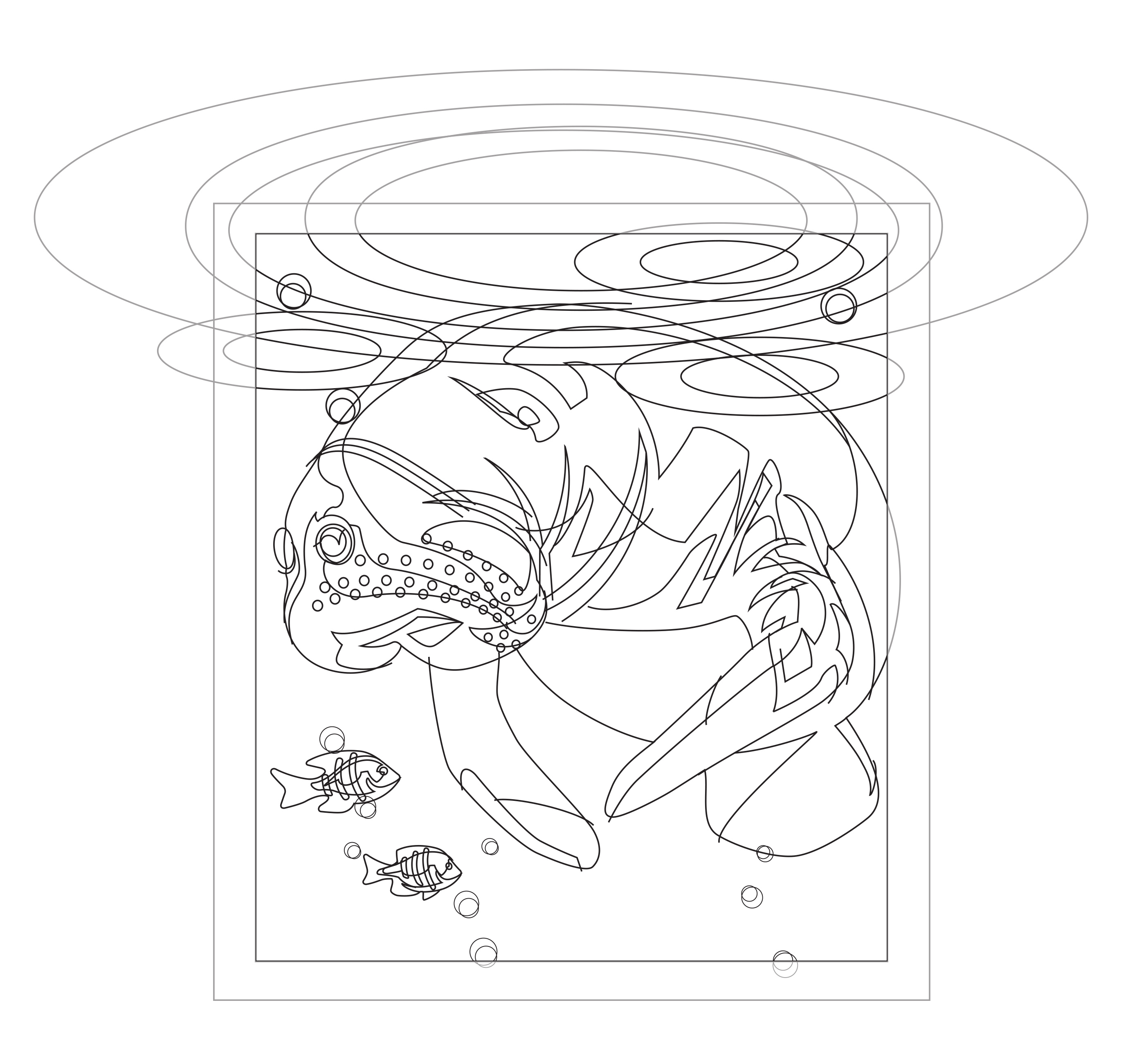
That substrate — the underwater surface that provides seagrass and other nourishment for the gentle, herbivorous marine mammal — co-evolved with the manatee over many millions of years and is vital for the entire ecosystem.
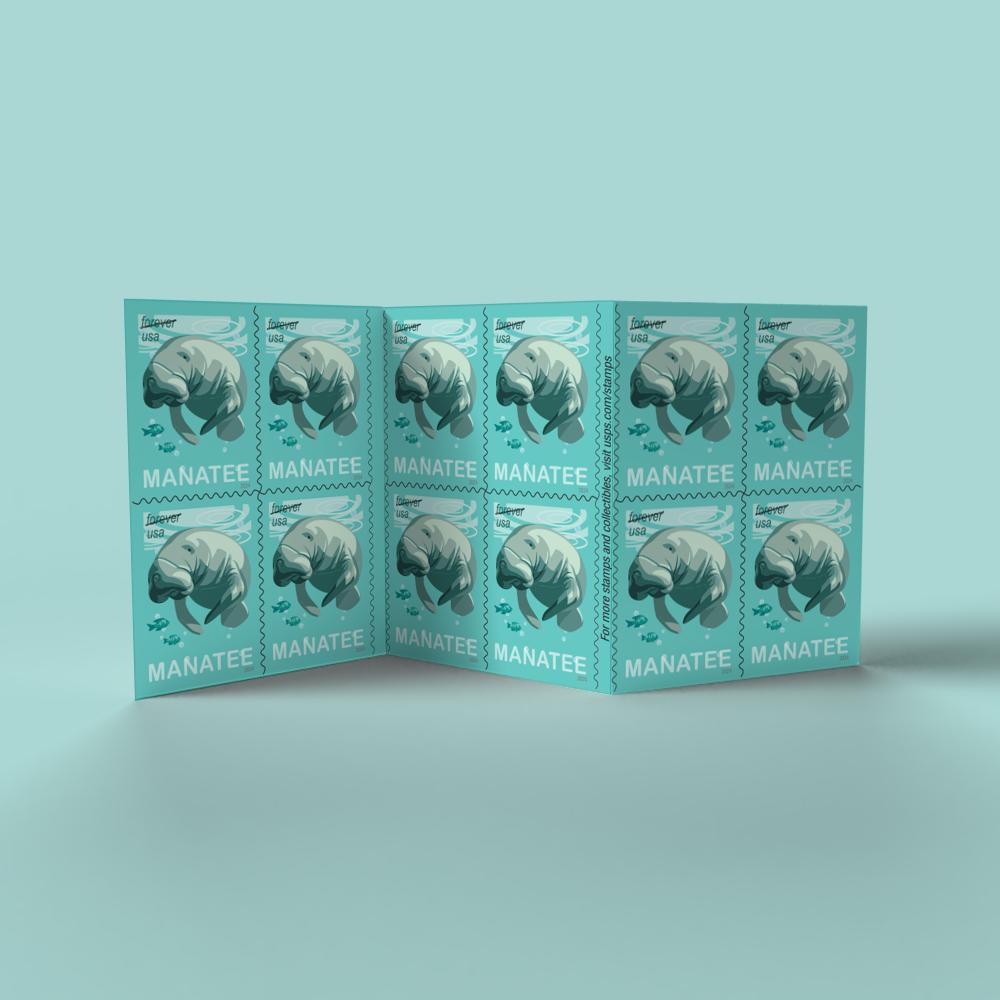
Stahl produced a version of the stamp art that included seagrass at the bottom, “but I understand that it made the type harder to read,” she says, expressing the classic less-is-more conundrum that all stamp artists and designers face.
The final artwork makes for an intimate view. Its vantage point, looking slightly upward at the manatee, made it possible for Stahl to suggest light filtering down through the water’s surface — and to include those telltale manatee “footprints” as well.